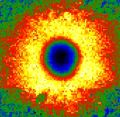Speaker
Description
The electrochemical systems for energy storage with aqueous electrolytes have attracted significant attention mainly due to their high safety, ionic conductivity, and lower costs in comparison to organic-based electrolytes. They also offer non-flammability, good recyclability, and environmental friendliness that presents them as a promising alternative for large-scale energy storage applications. However, their biggest challenge is the narrow electrochemical window of water (1.23 V), which prevents reaching higher energy density.
In this work, we present an electrolyte design strategy based on highly concentrated aqueous WIS electrolytes, which enables to significantly expand their electrochemical windows in the range of 2-4 V.[1,2] We explore how the concentration of salts, additives, and different types of cations and anions influence the electrochemical stability window, ionic conductivity, and other important physicochemical properties of aqueous electrolytes. To achieve an even wider electrochemical stability window, we tested several additives. These additives were selected based on their potential interaction with water molecules and water solvent activity and chemical reactivity. It was found that the high concentration of salts and specific additives can effectively suppress the dissociation of water and improve the stability of the electrolytes. Linear sweep voltammetry reveals that the oxygen evolution reaction (OER) and the hydrogen evolution reaction (HER) can be shifted with the increasing concentration of salts, pH, or via specific ion or additive effects in the aqueous WIS electrolytes. The electrolytes have also been evaluated using Raman spectroscopy to examine the modification in the local structure and hydrogen bonding of water. Electrochemical results indicate the existence of two distinct regions in the concentration behaviour that show a good correlation to the local water structure analysis by Raman spectroscopy. We identify the best cation-ion pairs and additives for broadening the electrochemical stability window and demonstrate their application in high-voltage aqueous dual-ion batteries.[2]
References:
[1] A. Z. Zafar et al., Electrochim. Acta 404 (2022) 139754.
[2] Z. A. Zafar, et al., J. Mater. Chem. A 10 (2022) 2064-2074.

